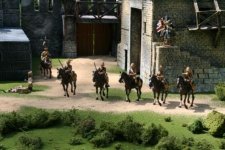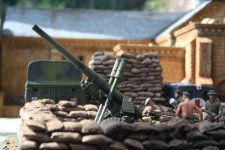1sttvbn
Private
- Joined
- Feb 4, 2012
- Messages
- 28
These figures look more lifelike when you just admire them with the human eye. But when you photograph them...It shows, how manufactured they really are.
Something I've noticed from a lot of the dio's on here. Maybe it's just when the photograph's are close up? I collect mostly German, and they are over running my curio.
(Time for another one.) I've had to resort to putting some on my computer desk. And with the Das Reich Tiger, and the King Tiger...It looks like a 1/35 battle is waging. But when
I took some photo's recently..They look like what they are..toy soldiers. No..I'm not on acid. :smile2: Just an observation.
Something I've noticed from a lot of the dio's on here. Maybe it's just when the photograph's are close up? I collect mostly German, and they are over running my curio.
(Time for another one.) I've had to resort to putting some on my computer desk. And with the Das Reich Tiger, and the King Tiger...It looks like a 1/35 battle is waging. But when
I took some photo's recently..They look like what they are..toy soldiers. No..I'm not on acid. :smile2: Just an observation.




